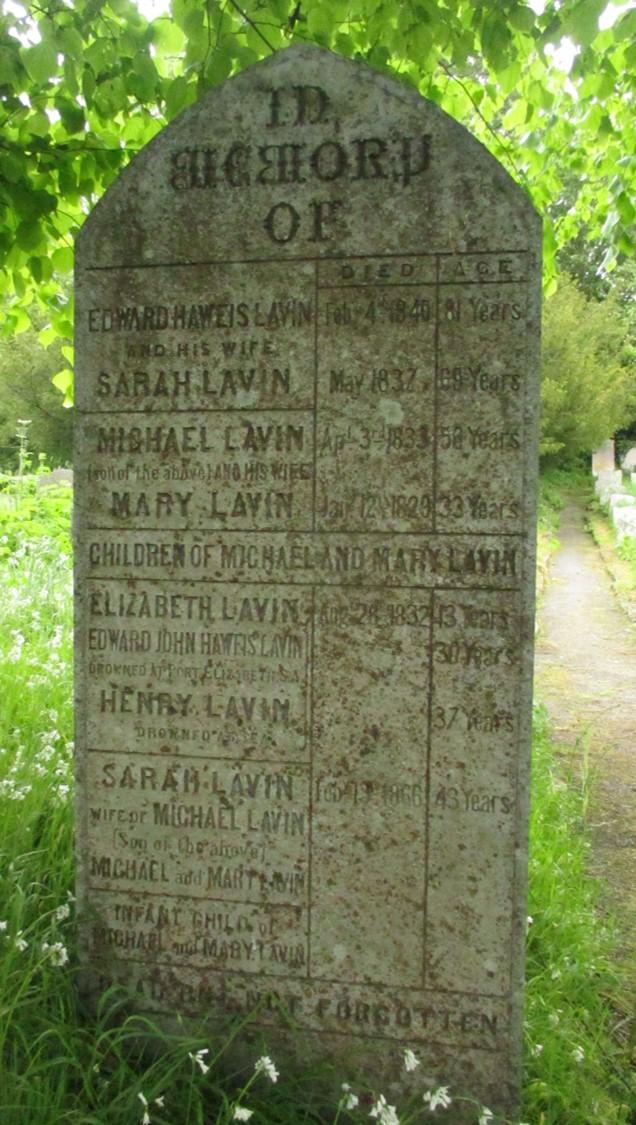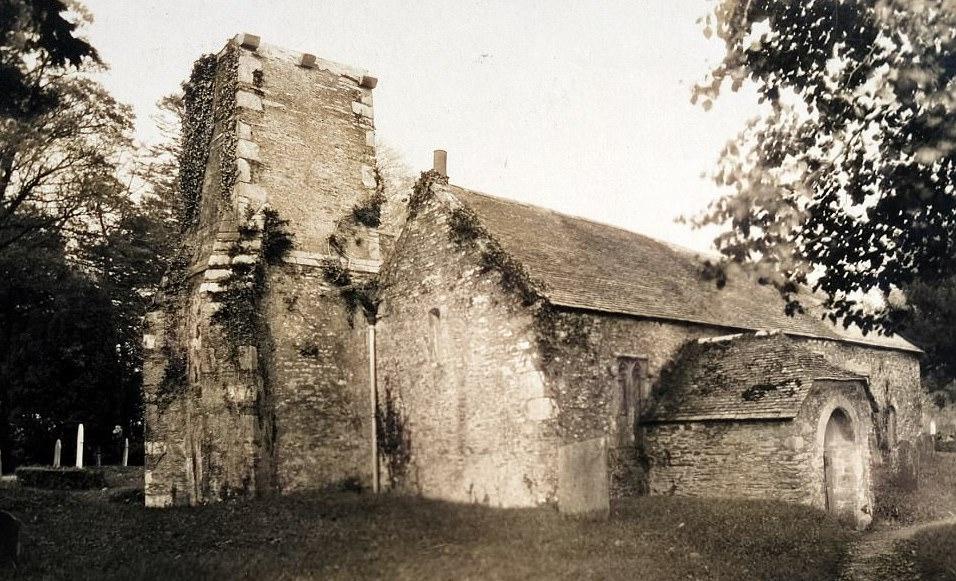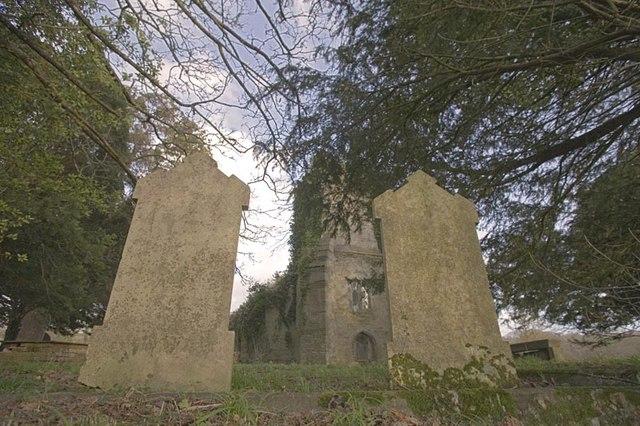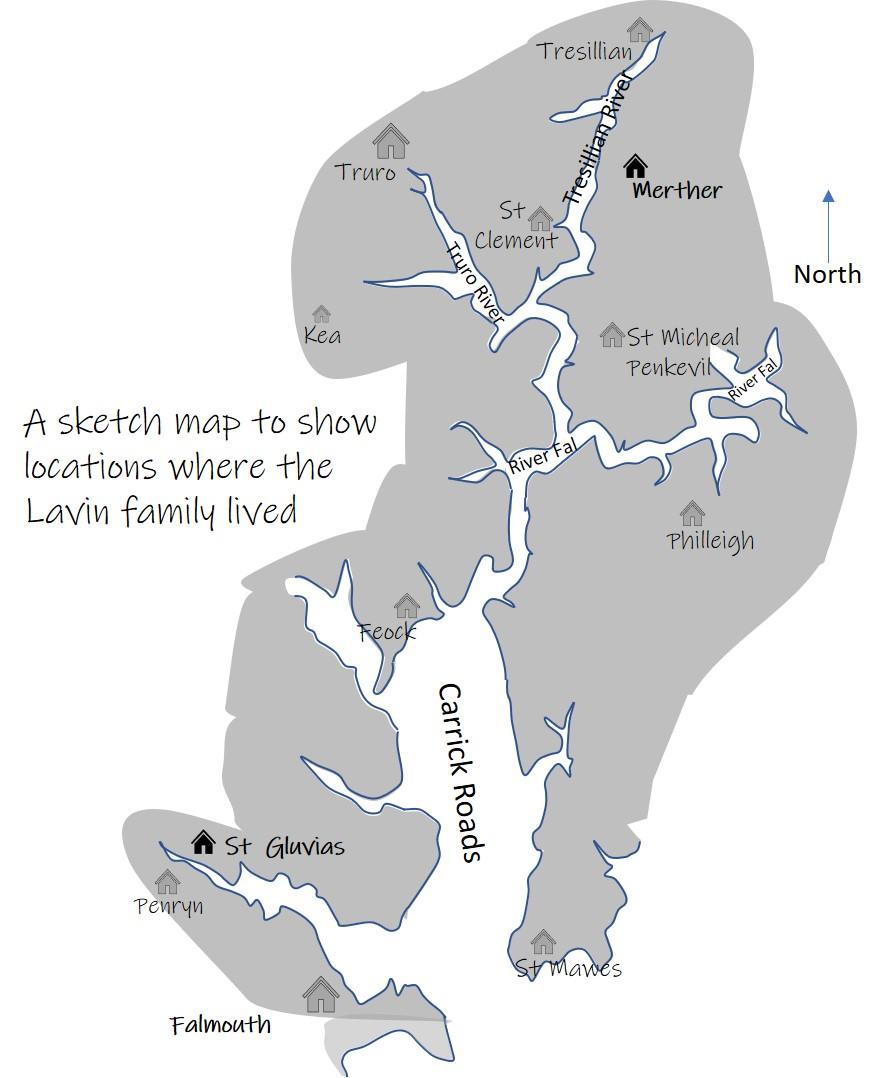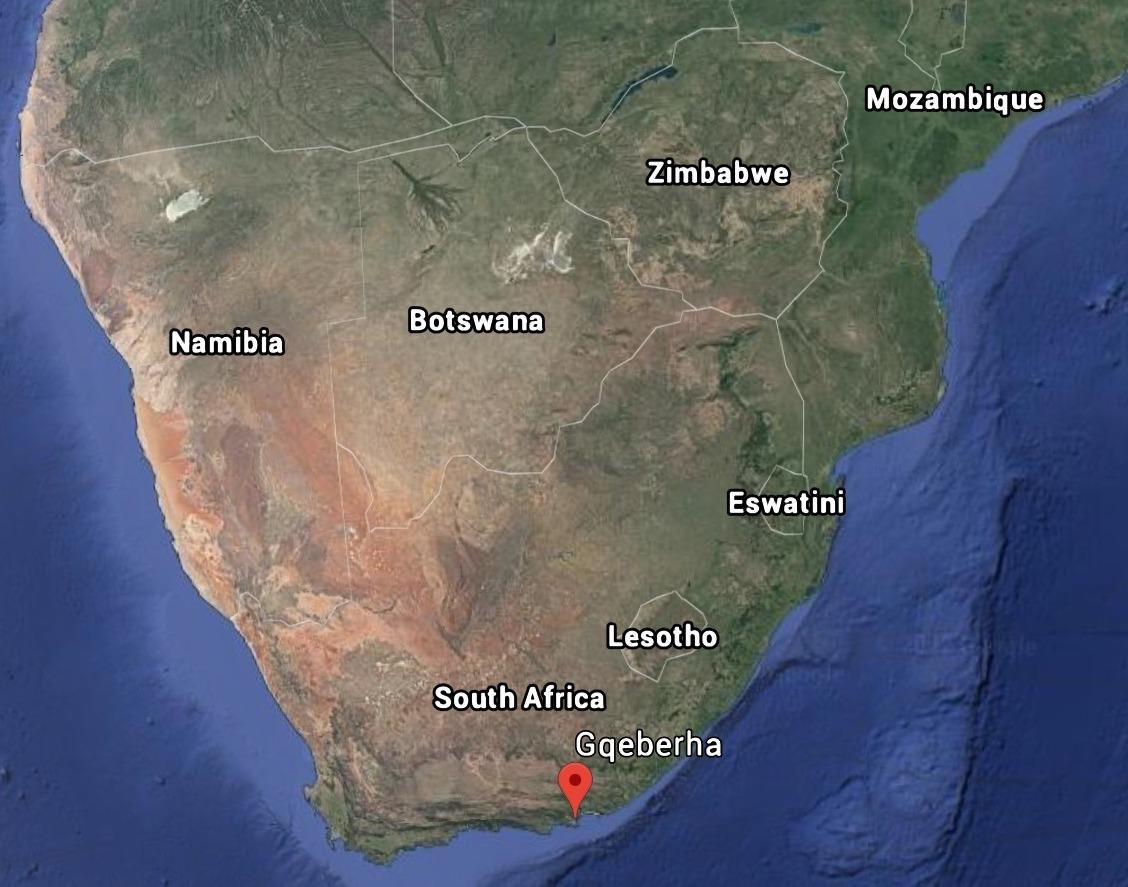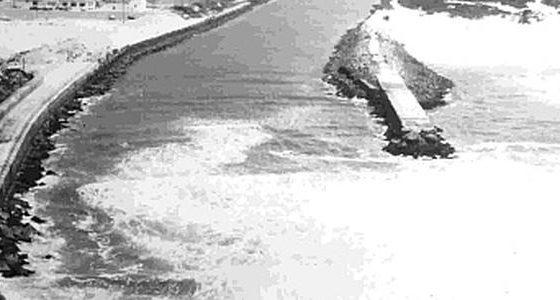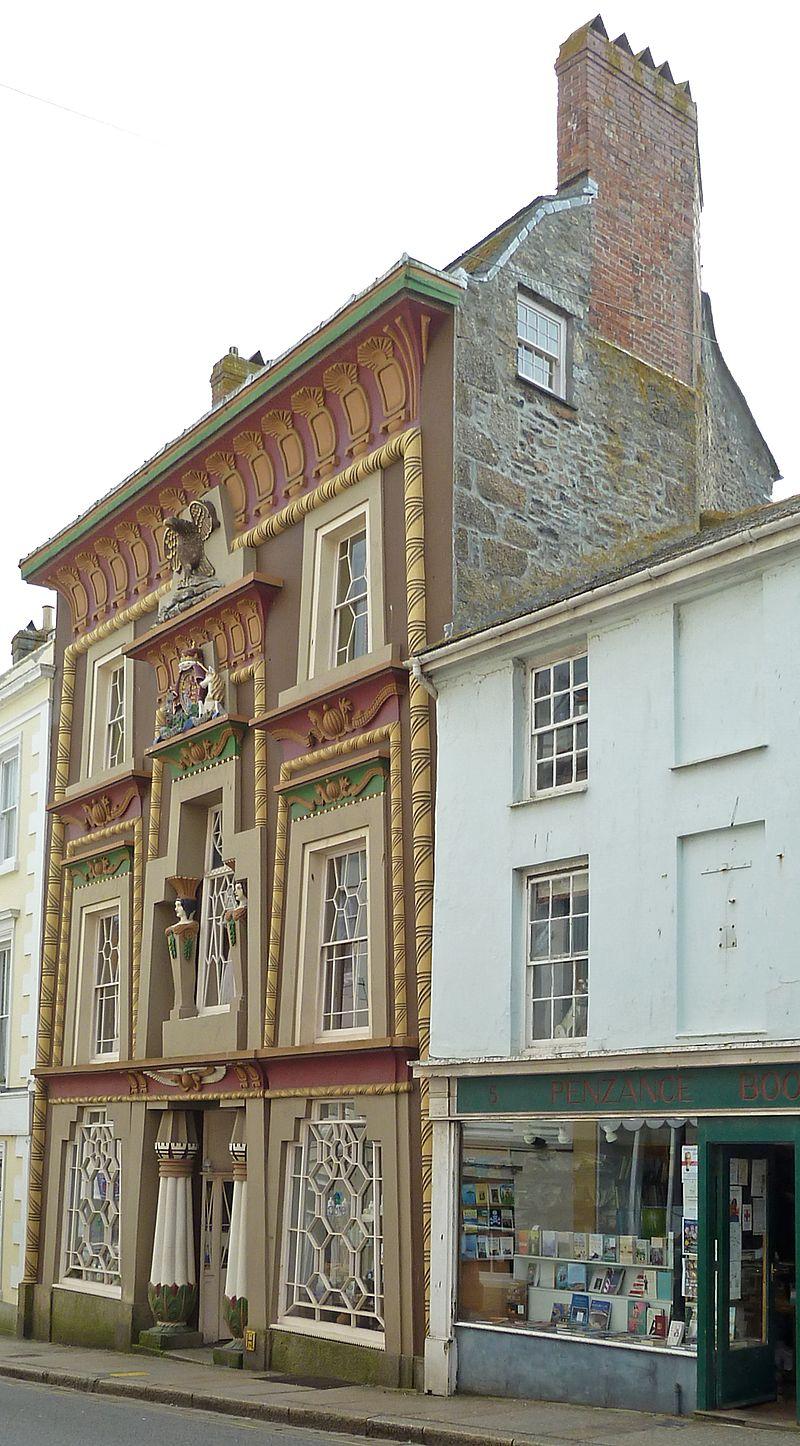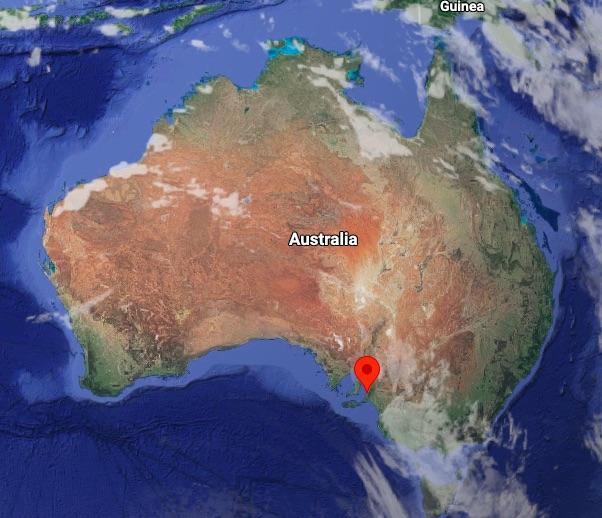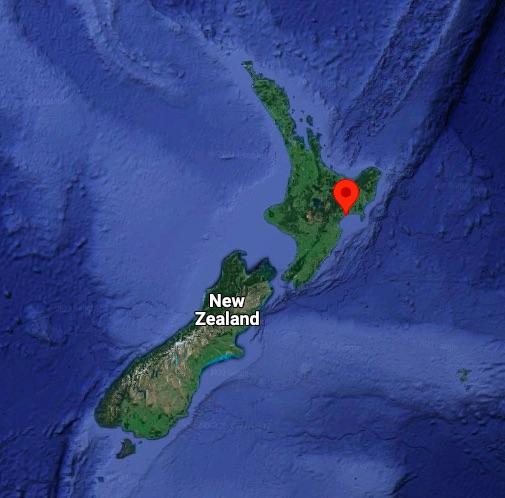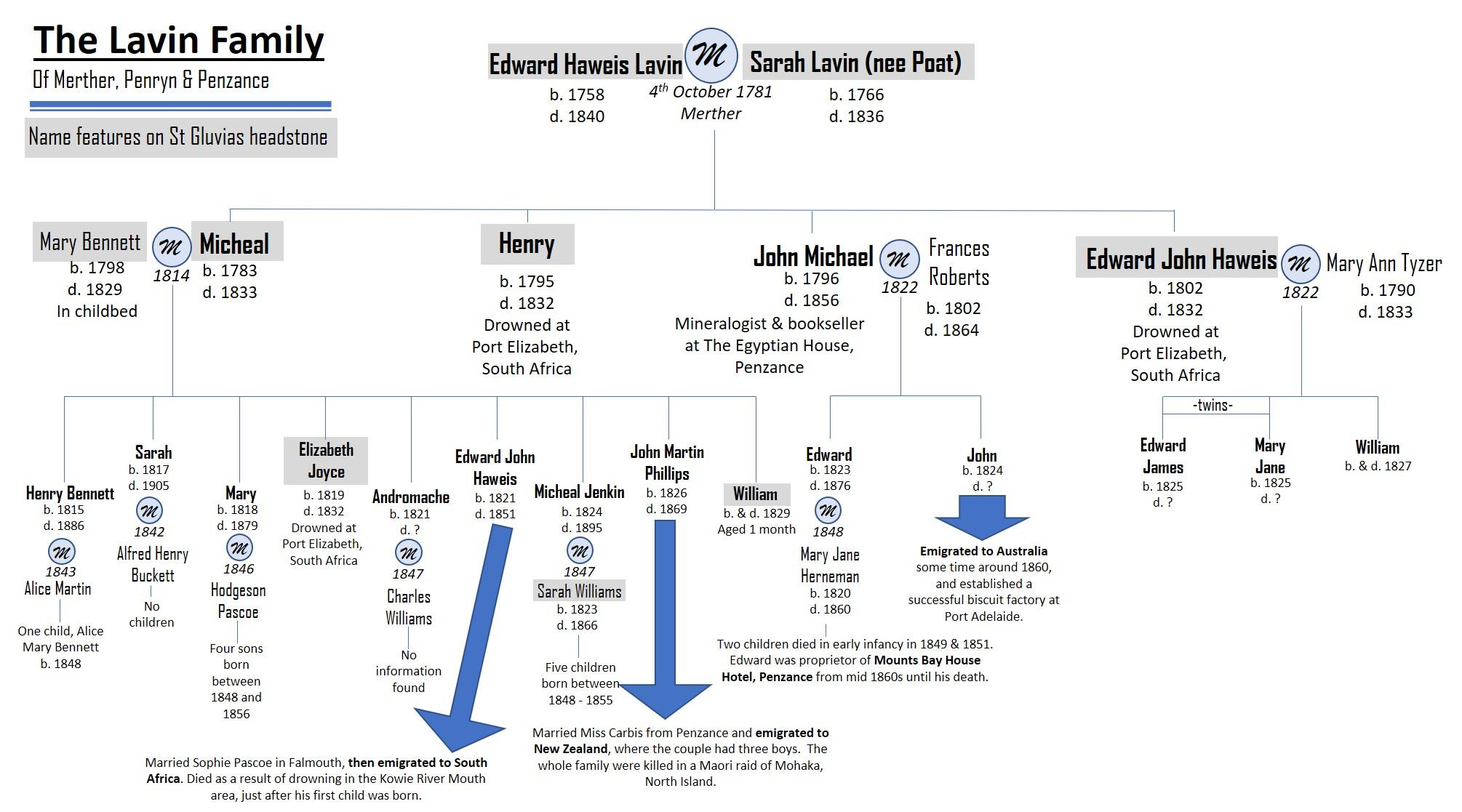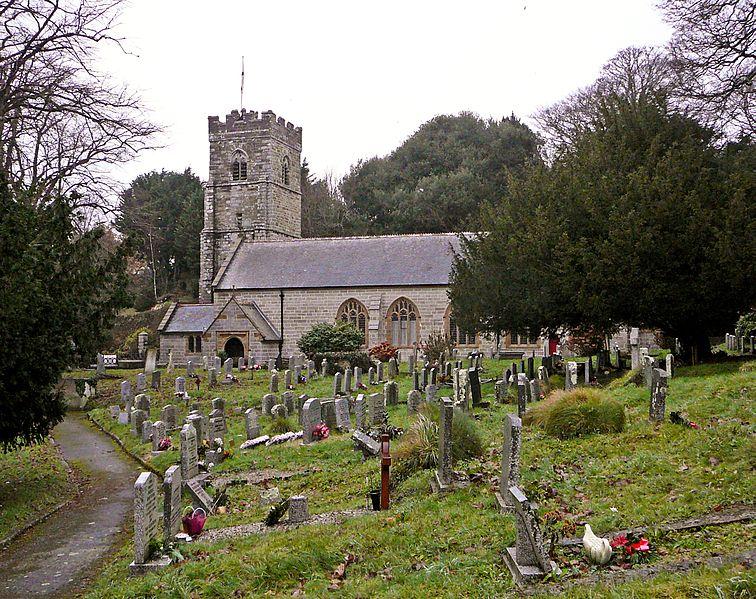
Disclaimer: Any views expressed by individuals and organisations are their own and do not in any way represent the views of The Heritage Portal. If you find any mistakes or historical inaccuracies, please contact the editor.
It was the well-preserved slate headstone - arranged like a spreadsheet of family history - that first got my attention: its organisation of facts stand in contrast to the just-contained chaos of nature in the green and secluded churchyard of St Gluvias in Penryn. But it was a chance glimpse of the surname in a book about Cornish minerals that intrigued me, and prompted me to look deeper. Pioneers in South Africa, New Zealand and Australia are all part of the family’s story - and the instigator of one of the most bizarre buildings in Cornwall…
The well-preserved slate headstone (Louise Hollick)
The Medieval church of Merther – a tiny hamlet on the east side of the Tresillian River, now a picturesque ruin – was the setting for the marriage of Edward Haweis Lavin, a carpenter, to Sarah (nee Poat) on 4th October 1781. At least four sons were born to the couple in Merther, and sometime around 1810, the family relocated towards Penryn, a busy port town since medieval times, further down the river. When their eldest son, Michael, married Mary Bennett in 1814, it was at St Gluvias church, a beautiful setting just near to the Penryn River (see main image).
Old photo of Merther Church (Peter King)
Derelict Merther Church (Philip White via Wikipedia)
Michael and his wife had 9 children between their marriage in 1814 and Mary’s death, 3 weeks after giving birth to their ninth child, at the end of 1828. Tragically, the baby, William, also died, less than a week after Mary, and he is commemorated - though not by name - on the final line of the headstone in St Gluvias.
The following years must have been difficult ones for the widowed Michael and their remaining children, then aged between 14 and 3 years.
Sketch map to show the places where the Lavins lived (Louise Hollick)
Perhaps propelled by a search for new beginnings, three years later, in 1832, two of the children, Elizabeth (aged 13) and Edward John Haweis (aged 10) travelled with two of their uncles, Henry and Edward, to South Africa. Elizabeth and her two uncles were drowned in an accident at Port Elizabeth (now Gqeberha) – only Elizabeth’s brother, Edward, survived.
Location of Gqeberha (Port Elizabeth) (Google Maps)
Whether Edward travelled back to Cornwall immediately, or spent some time in the Cornish diaspora community of South Africa is not known, but the 1841 census shows a twenty year old Edward lodging in Falmouth – presumably working or studying - and in 1849 he married Sophie Pascoe (whose family worked adjacent to his uncle in Penzance – below). Together, the couple emigrated to South Africa and settled in the Kowie River Mouth area, but water-related tragedy struck for the second time: an article in the Grahamstown Journal (ref 1) relates how Edward was drowned after falling off a cargo boat, just a few months after the birth of his first child – a son also called Edward Haweis Lavin. Online research suggests that this son grew up in South Africa, married (Hester Mary Knott) and had children, one of whom, Benjamin, claimed an area of land in the Limpopo province in the 1930s which he farmed up until his death. His widow donated the land to the non-profit Wildlife and Environmental Society of South Africa in 1976, and this area has since been reclaimed as a part of ancestral land distribution by the Manavhela community.
The Kowie River mouth at a later date (Tony Elliott via Kowie Museum)
The accident in 1832 in Port Elizabeth had ended the lives of two of the four sons of Edward and Sarah Lavin: what became of the remaining two? The eldest child, Michael, a draper, passed away in Penryn in 1833, leaving his seven surviving children as orphans. Five of them (excluding the two oldest boys) were living with a maternal great aunt in Market Street, Lower Penryn in 1841, and during the following 6 years, all of Michael and Mary’s children married in the St Gluvias parish church, and set up their own family homes.
The remaining child of Edward and Sarah Lavin, John Michael Lavin, had been born in Merther in 1796, and is the family member that rose to most prominence. In 1822, John was living in Madron, near Penzance, working as a bookseller and stationer. He also had an interest in collecting and selling specimens of beautiful mineral samples brought up from the Cornish tin mines, the acquisition of which was becoming fashionable in the wealthier echelons of society at this time. In 1822, John married Frances Roberts of Illogan - a village at the heart of the metalliferous mining boom in the southwest of England; perhaps he had come to know Frances’ family through his work in the district, collecting mineral specimens?
Two sons, Edward and John, were born to the couple in quick succession (in 1823 and 1824), and the family resided in the Penzance area. In 1835, he described himself as a mineralogist, and around this time he acquired two adjacent properties on Chapel Street in Penzance, where he began an opulent conversion to what is known as the Egyptian House (or Hall) – a building unique in the southwest of England. John set up the ground floor as a museum to display his mineral specimens, alongside the on-going sale of manuscripts and stationary items. His business prospered – almost certainly enhanced by the curiosity aroused by the unusual premises – and John continued his trade up until his death in 1856, after which his eldest son, Edward, took on the business.
Egyptian House (Tim Green via Wikipedia)
Edward could not have shared his father’s interest in the mineral specimens: he sold the mineral collection in 1863 to Baroness Burdett-Coutts, and some of these specimens are now housed in the collections of the Natural History Museum, London and Oxford University. John’s wife, Frances, passed away around this time, and subsequently Edward seems to have moved from the Egyptian House on Chapel Street and purchased the Mounts Bay House Hotel in Penzance, where he was the proprietor until his death in 1876.
Edward’s younger brother, John, may have left for Australia around 1860: an article mentions the success of a biscuit bakery he had established at Port Adelaide in the Royal Cornwall Gazette of 1868: particular mention was made of the ‘steam powered’ equipment that was employed in his manufacturing process, and the extensive shelf-life of his ‘ship’s biscuits’ – an important consideration in an era when long sea voyages were common. There is evident local pride in the title of the article: ‘The success of a Cornishman in Australia’.
Location of Port Adelaide (Google Maps)
The youngest surviving son of Micheal and Mary Lavin, John Martin Phillips, was perhaps encouraged by the success of his namesake cousin from Penzance: John married a Miss Carbis from Penzance – perhaps introduced by his uncle or cousins there – and the couple moved to the North Island of New Zealand some time around 1860. Three sons were born to the couple there but, tragically, the family were attacked at their house near to Mohaka, North Island, in a raid by local Maori tribes who were resisting the settling of the area by Europeans - a series of conflicts referred to as the New Zealand Wars. The whole family perished. A harrowingly detailed account of this event featured in the Cornubian and Redruth Times in July 1869.
Location of Mohaka (Google Maps)
As the deaths of John Martin Phillips Lavin and his family are not mentioned on the headstone at St Gluvias, perhaps we can conclude that the stone was commissioned between 1866 (the latest date inscribed) and 1868: it may have replaced an earlier stone with fewer details on. Though not recorded here, the eldest child slain in New Zealand was called Hawles, a variant of the family name of 'Haweis', passed down for (at least) three generations: it forms a link between the banks of the Mohaka River in New Zealand to the village of Merther, near the Tresillian River over 11,500 miles away - a location now steeped in the peace of nature, but once the launching pad for global adventure.
Family Tree of Lavin Family - Open in new tab for a larger view
About the author: Louise Hollick is the founder and owner of Attend Services, a delivery service offering to take flowers or other tokens of remembrance to resting-places of friends/family buried in mid and west Cornwall. She writes regularly on the historic spaces and places of Cornwall.
References:
- Death By Drowning Grahamstown Journal 1851 - 3 - July to September - eGGSA Newspaper Extracts (egssa.org)
- The New Humanitarian https://www.thenewhumanitarian.org/report/58181/south-africa-landless-landowners-benefits-land-reform
- Minerals of Cornwall and Devon. P G Embrey and R F Symes. Natural History Museum London, pub. 1987.
- The Success of a Cornishman in Australia. Royal Cornwall Gazette. 24th September, 1868.
- Cornubian and Redruth Times - 16th July 1869
Comments will load below. If for any reason none appear click here for some troubleshooting tips. If you would like to post a comment and need instructions click here.

